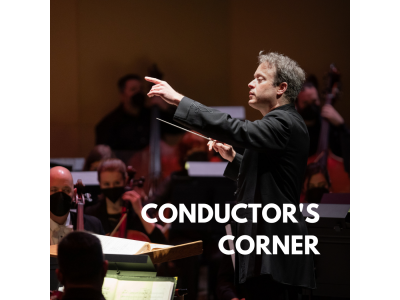Conductor's Corner: To Clap or Not to Clap...?

People often ask me if I’m bothered by audiences clapping in between movements. Often, the people asking this question are concertgoers who have spent years in the concert hall, well versed in the repertoire and the manners that have become so entrenched – and they are usually very surprised to hear my answer: “not at all; in fact, I encourage it!”
The very idea that audiences shouldn’t dare to clap between movements of a symphony, or a concerto, is something that was invented relatively recently. From the earliest days of secular musical performance, audiences were much more willing to show their appreciation – or their displeasure! – with the composer and the performers on stage. Moments of high emotion and stirring music were applauded directly during the piece (much as we do with jazz music today), while performers who didn’t hit the mark often faced boos from the public, or even thrown projectiles. From all accounts, composers were not only accepting of this, they cherished it as valuable and true feedback on their art and craft.
In a famous letter to his father, Wolfgang Amadeus Mozart writes how the French audience applauded during the first performance of his Paris symphony, signaling such a success that the composer treated himself to an ice cream in celebration afterwards! Johann Sebastian Bach held a weekly ‘jam session’ at the local coffee shop frequented by students, where he performed many of his smaller compositions – and the atmosphere must have been anything but the reverential silence that is too often stifling the concert halls of today.
The idea that the only way to appreciate music was in rapt silence began to gain acceptance in Germany during the Romantic era and was encouraged by some composers (notably Felix Mendelssohn and Robert Schumann, who both wrote symphonies that flowed seamlessly from movement to movement). As composers were experimenting with longer forms, the idea that the whole work should be appreciated uninterrupted became the norm, although at the time there were still dissenters. Johannes Brahms, listening to the silence after the opening movement of his first piano concerto, immediately feared the piece would not be liked by the public at that time (and he was right!).
In today’s concert halls, we are seeking to open our doors to a wider audience, to create a more welcoming space. As a performer, I appreciate very deeply the honest reaction of the public – it’s valuable feedback for those of us on stage to let us know that our message is being received, that people are feeling the music the way we do, and are moved to express their gratitude and joy!
Of course, there are moments of pause in a work where applause may not be appropriate – where the music is tragic, defeated, inwards-looking. In my experience, if the performers have done their job creating the character and atmosphere, the spell will continue until the next movement. There are even works where I feel applause at the end is almost uncalled for (such as Piotr Ilyich Tchaikovsky’s Symphony No. 6 Pathetique, or Giuseppe Verdi’s Requiem). However, the need to show appreciation to the players and singers should always be welcome.
I think it’s time to break this antiquated tradition and allow ourselves the right to applaud the music – whenever we are so moved!



